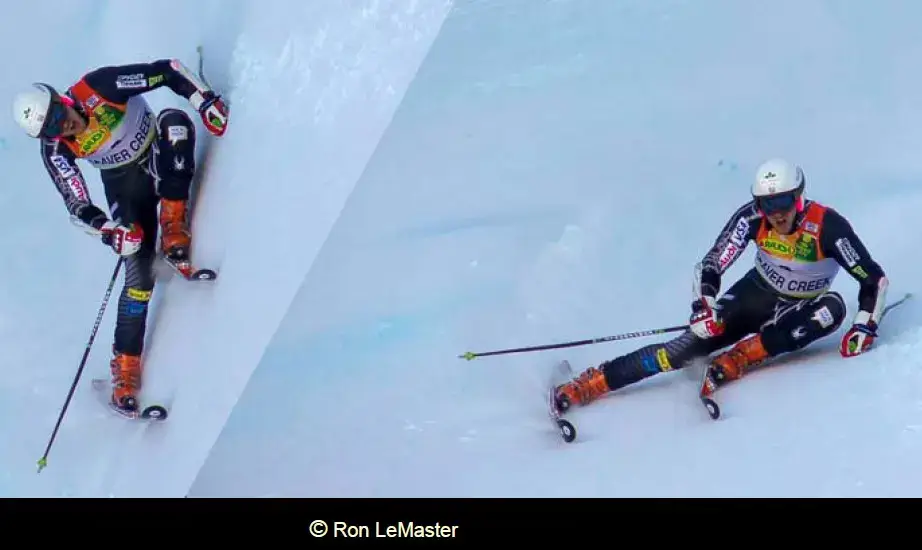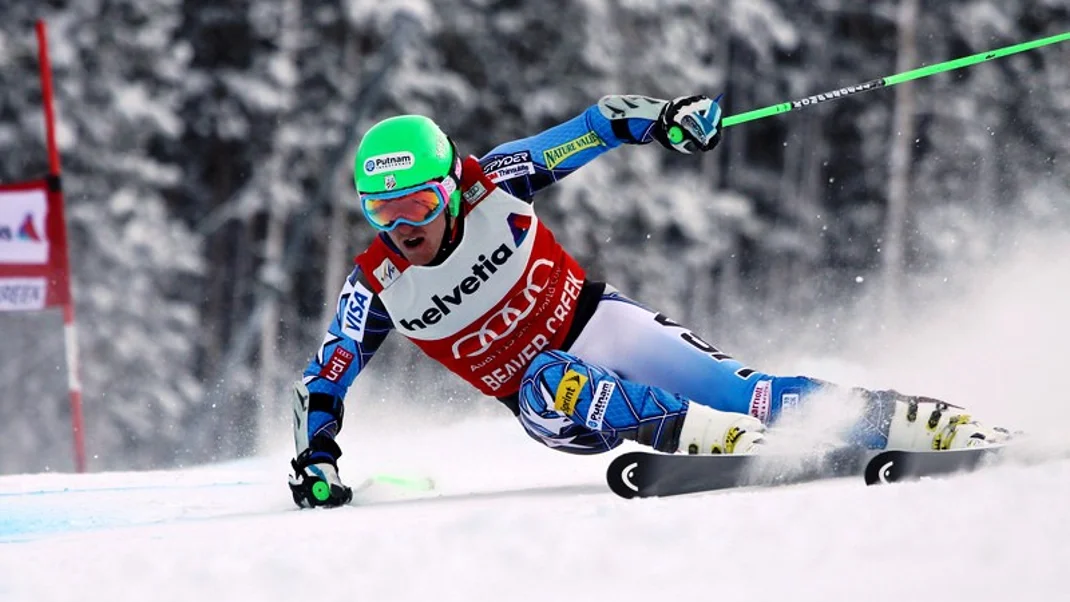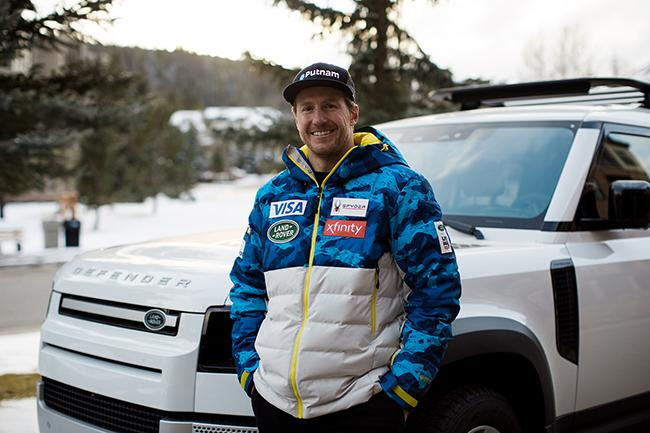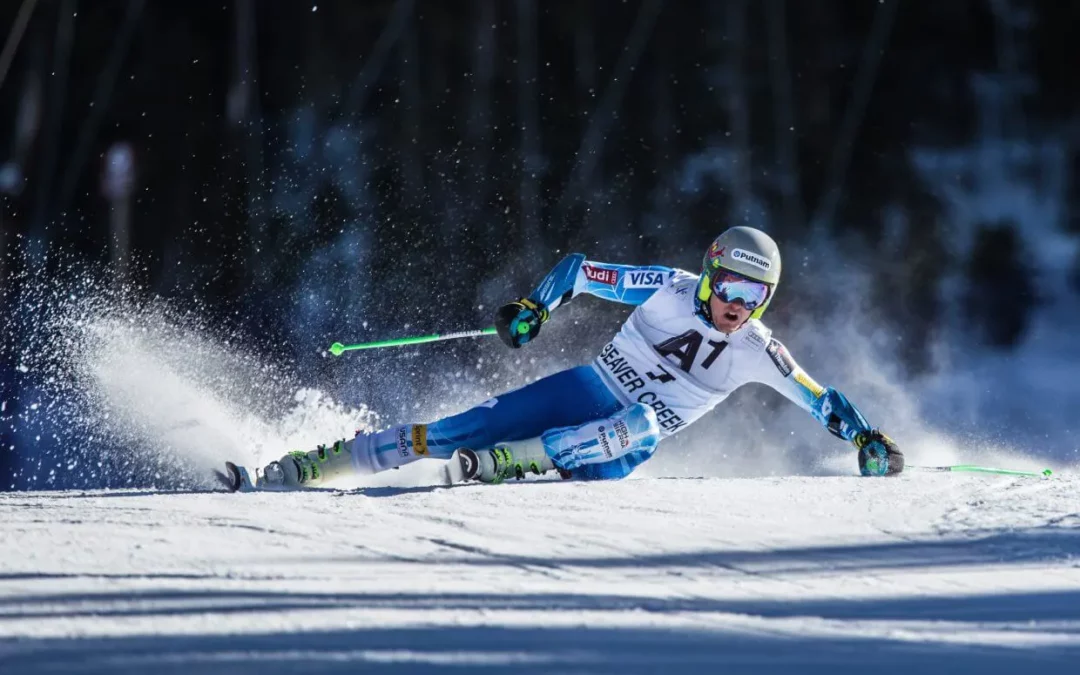A recent Instagram live interview with legendary freestyle skier Jonny Moseley and “Mr. GS” Ted Ligety (you can watch it here) was what motivated me to write this post.
In an hour or so one-on-one, they covered a lot of topics, but the part that fascinated me the most was when they broke down Ted’s GS turn together.
Ted Ligety’s secrets are revealed, by the man himself.
Here’s a list of quotes that were really interesting, eye-opening, and very enjoyable to listen to…
The outside ski is king
“One of the most common novice questions people ask me is regarding how much weight on each ski… And I never think about it but it is pretty much 100% on the outside foot. The inside foot is kind of just dragging in there. On the flats, might be 80/20 because you’re pumping the turn. But you’re never thinking about what the percentage is. Definitely, it is over the outside ski where you want to be!“
Jonny Moseley agrees and says mogul skiing is just the same, 100% from outside ski to outside ski.

Pulling the inside foot back at the beginning of the turn
“I suck my inside foot back at the beginning of the turn in order to take weight off it and tip it. The way I do that is with a hamstring pull of the old outside leg, at the end of the turn.”
Hands position
“The outside hand for me is just for balance. Often times people think too much about their hands. Your hands help aid the rest of the system. They should be in a place where they help you react to stuff, but that’s just it.
Beginners ski with their arms forward all the time. But if you drive your hands forward all the time, your hips go back.”

Building angles from the ground up and “hip drags”
“You always start a turn in this order: ankles, knees, and hips. Everything starts from the ground. You build angles from the ground up.
I’m not trying to drive my hip to the ground. The hip gets to the ground because of the outside leg extension/push at the top of the turn.
For me to build a high edge angle I need to drag my hip to the ground. That’s because of my anatomy. Other guys in the world cup don’t need to have the hip that close to the ground because they can drive the inside knee further in and get that same edge angle. But I do need to have my hip in, in order to achieve edge angle.”
Ski technique is adjusted to the skier’s anatomy
“The analytical piece of ski racing is that everybody’s body is a little bit different so everybody’s technique has to adjust around their body, as well as the equipment. That’s why trying to copy one person’s technique doesn’t really work.“

I hope you enjoy these tips as much as I did, and try to incorporate them in your own skiing. Always looking for that perfect turn, a never-ending search by the way…
Keep ripping some arcs!
If you find this piece of information useful to improve your skiing, please support this website and help us to keep it up and create more content! A small donation really means a lot to us... Thank you so much!


Hi Fede,
There’s always a lot of curiosity, confusion, argument over the inside ski, where it should be, how it’s weighted. Thanks for including a link to the video as it had some additional insights.
I liked not only that he said 100/0 weighting but he thought the position of the inside foot is important. I’ve heard a lot of suggestions on where to put the foot an how to get it there. He said he thought of a hamstring curl to bring it back and unweight the inside ski at the end of the turn. He said that he did this to get it position properly to get it on edge and weight it into the next turn. Also that if you don’t pull it back you need to push your COM forward to get on top of it. Interesting.
Question for you; it seems that there are a lot of suggestions from the instructor corps on what to do with your inside foot; pull your foot back, pull your toes up, pronate, etc. Also it’s suggested to weight the inside ski and actually “lead” with the inside ski into the turn. Can you give some thoughts on if these are all trying to achieve the same thing? Today there is a ton of emphasis on the inside ski/foot. I like Ligety’s simplification… it doesn’t really matter, just make sure the ski is tracking and it’s in position for a rapid edge change.
One other thing of note; his reasoning for parallel shins was that you wanted the vectors aligned so you could better load the forces… a bit in conflict with the zero weight on the inside ski but Ligety was generating some big forces.
Frank
Hi Frank, thanks for the comment. The flexing/shortening of the inside leg and the pulling back and tipping in of the inside foot starts even before it becomes inside leg/foot (at the end of the previous turn, when it is still the outside support leg). The pretty famous “flex to release” to unload the old outside ski and start loading the future outside ski, even befor edge change, that is even before it becomes new outside ski, is done as well to achieve real early loading of the new outside ski. That’s what I look for, on every turn. The 100% outside / 0% inside ski pressure distribution is a theorical goal, but impossible to achieve unless you ski with your inside ski completely lifted the whole turn. But it is how we have to approach that skill. Because if you focus on loading the inside ski just a bit, you will get way too much pressure on the inside ski.
Pulling the new inside foot back, as well as driving the new ouside foot/hip forward in the direction of the new turn is a key movement movement to start the turn in the strong position (hips squared).
Parallel shins means to achieve the same edge angle in both skis. Remember that the tipping (and eventually the edge angle achieved on both skis) movement comes from the tipping of the inside foot. The outside foot automatically matches the inside foot angle. And not the other way around. Tipping from the outside foot produces the A-framing stance, because the inside foot does not follow/copy the outside one.
Thanks again for your excellent insights, and I would love to ski with you and show you these concepts on an actual skiing clinic. Cheers from Italy, and soon from Bariloche Argentina!
It seems weird that Ligety preaches going 100/0 when from all photos of spray pattern it is clear that it looks more like 90/10 or 80/20. I can only assume he is talking about mental focus and not actual outcome.
Hello Jonathan, thank you for your comment. I agree with you, it is a theoretical search, a theoretical concept. A looked for “goal” or “concept”. In practice, if you meassure the pressure on the skis, it looks more on the 80/20 side, depending on the turn phase. But if we think about pressing a bit the inside ski to get that 20%, we go way beyond that number. So think about trying to get 100% outside, 0% inside :-). Cheers from Italy!
Awesome insights Fede! Something to add to my list of things to work on this coming season. Thanks
Thanks, John. I’m very glad you liked it!